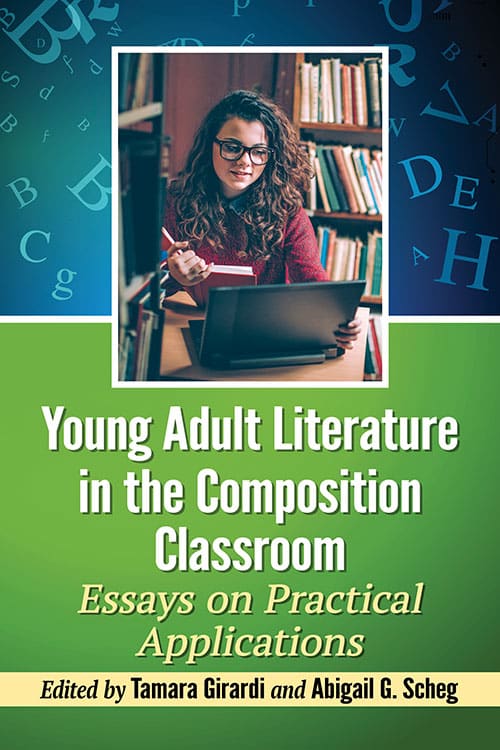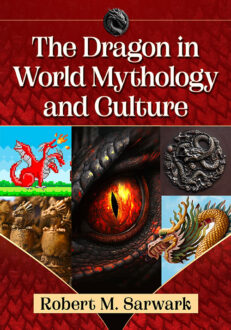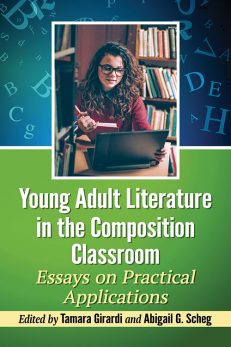Young Adult Literature in the Composition Classroom
Essays on Practical Applications
Original price was: $39.95.$19.99Current price is: $19.99.
In stock
About the Book
Young adult literature holds an exceptional place in modern American popular culture. Accessible to readers of all levels, it captures a diverse audience and tends to adapt to the big screen in an exciting way. With its wide readership, YAL sparks interesting discussions inside and outside of the classroom. This collection of new essays examines how YAL has impacted college composition courses, primarily focusing on the first year. Contributors discuss popular YA stories, their educational potential, and possibilities for classroom discussion and exercise. Instructors considering this book for use in a course may request an examination copy here.
About the Author(s)
Bibliographic Details
Edited by Tamara Girardi and Abigail G. Scheg
Format: softcover (6 x 9)
Pages: 242
Bibliographic Info: notes, bibliographies, index
Copyright Date: 2018
pISBN: 978-1-4766-6995-3
eISBN: 978-1-4766-3348-0
Imprint: McFarland
Table of Contents
Introduction (Tamara Girardi and Abigail G. Scheg) 1
“It’s like swimming upstream”: Using Rainbow Rowell’s
Fangirl to Alleviate Anxieties and Grow Writers (Lacy Marschalk) 9
Using Dystopian Texts to Promote Social Responsibility in the Composition Classroom (Melissa Ames) 21
Of Myths and Thieves: Teaching the Literacy Narrative with The Book Thief (Mary McCulley) 37
Love Always: The Perks of Being a Wallflower as a Rhetorical Text (Andrew Bourelle) 53
“They should not … engage students in writing about vampires”: Reconciling First-Year Composition with Young Adult Literature (Mariam Kushkaki) 63
Dystopian Literature in the Multi-Cultural College Composition Classroom: A Catalyst for Self-Reflection (Mary-Lynn Chambers and Kathleen B. Gray) 75
Young Adult Literature and Otherness: Empathy as a Rhetorical Tool (Tara Stillions Whitehead and Richard James Whitehead) 91
Identity Performance in a Virtual World in Cory Doctorow’s Little Brother (Kelly F. Franklin) 105
Dreaming the Green Man: Toward a Pedagogy of the Resonant Mythological (Christi L. Cook and LeeAnn Olivier) 118
Reading Young Adult Dystopian Fiction in the Indian Classroom (Padma Baliga and Namrata Harish) 131
Teaching Creative Writing as Composition: Kekla Magoon’s How It Went Down, Social Justice Texts and Expanding Student Narratives of Difference Through Use of Engaged Pedagogy and Significant Learning Goals (Jenny Ferguson) 144
“I can’t always be Lois Lane…. I want to be Superman too”: Twilight, Gender Studies and Encouraging Analysis in the College Composition Classroom (Jenny L. Howe) 156
Writing in the Afterworlds (Michele D. Castleman) 169
Performing Resistance in the Epic Theater of The Hunger Games (Kelly F. Franklin) 180
Writing About Death: Young Adult Literature’s Emphasis on Death and Its Place in the Composition Classroom (Matthew D. Fazio) 191
Curious Students in the Composition Classroom: The Impact of Neurology Ideology in Young Adult Literature (Danielle Brownsberger) 204
Chinese Folklore and Popular Culture in Gene Luen Yang’s American Born Chinese (Tiffany M.B. Anderson) 221
About the Contributors 231
Index 235





